Sandy Fussell's Blog, page 2
July 15, 2018
Writing in My Un-Comfort Zone
I do it all the time. Put my hand up. Volunteer faster than the speed of light. I think with my heart and then my head gives me a talking to afterwards. But usually it works out. Like running a Writing Your Family History Workshop for Seniors Week.
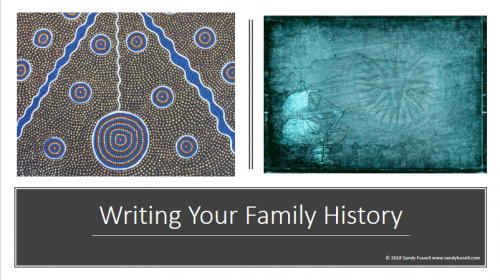
Surely I could do that? I’m a writer. I’ve got a copy of Hazel Edwards most excellent How to Write A Non-Boring Family History and I’ve been lucky enough to benefit from Hazel’s personal tips over the years. Plus, I’m writing my own family history. A Writing Your Family History Workshop. Yes, easy-peasy, I could do that with my eyes closed.
Two weeks prior to the date, I sat down to create the PowerPoint. Whoa! Such a lot of work. Finding examples from my own family history that fit the points I want to make. Creating a exercises from scratch. Introducing some Internet secret weapons – History Pin for research and Sutori for timelines. But the real problem is the whole process is so, so distracting. Two hours later I’ve done two more hours of my own genealogy research and not a single PowerPoint slide.
Eventually it all came together. I believe it will and therefore, it always does. Works so far!
The workshop was such a lot of fun. Three hours with a group of people as keen on genealogy as me. All eager to learn how to write it down so that other family members would be enticed to read it. Eager to learn how to spin a story around even the most boring ancestor.
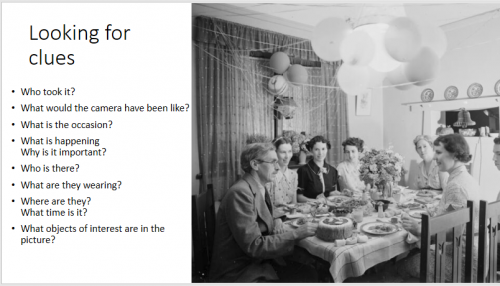
I think its important to write family history into a story. In my family, no-one else cares about their history, but everyone loves a story and maybe some day, a distant descendant will read what I write and take up the research baton. On my journey I’ve been the recipient of many treasures no-one else wanted. To be told by distant relatives holding a piece of the puzzle, “we’ve been waiting for someone from your part of the family to get touch, but up until now, no-one came,” is like finding an Easter egg in a computer game.

I don’t have any famous relatives. My most famous ancestor came out on the Third Fleet and at one time owned half of The Rocks in Sydney but the direct line of descent that I was destined to join never contained anyone who did anything of note. The other line had poets, a famous explorer and even a prime minister’s wife.
“If you don’t recount your family history, it will be lost. Honor your own stories and tell them too. The tales may not seem very important, but they are what binds families and makes each of us who we are.” – Madeleine L’Engle
I do have two missing relatives for whom no record can be found. Their stories are shrouded by rumour and intrigue. Aunty Anne swears it was murder most foul and an Earl’s youngest son betrayed by his convict wife. But I don’t want to make their stories up so despite all the promise, it’s a dead end, even if it does end in a cliffhanger question mark.
My great-grandmother accidentally started me on this quest. When I was 20, and had moved to the big city, my sister sent me a news clipping. My great-grandmothers’s 100th great-grandchild had been born. That was a huge shock. As a child I lived nearby and visited often. My father had a special relationship with her. He had lived with her in his youth when the Burragorang Valley was flooded and his family went west but he stayed behind. I always knew I was one of many but not that many! I had always felt special – like I was one of a lucky few – not one of over a 100 people with exactly the same relationship to her. (And when I told this story to some of her other great-grandchildren – they said theyf elt the same way. She was the one who was special).
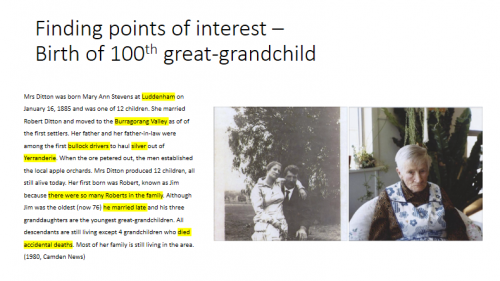
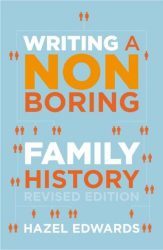 At the time of the news clipping, Grandma Ditton had 161 descendants and they were all alive except four who had died in accidents. Not one had died of natural causes. (How did that happen? War has a way of juggling the timelines. The eldest sons went to war, came back and married last.) It was almost an Australian record for having the most descendants. The record was then held by a man whose name I’ve forgotten. But then again, he had two wives. He ought to have been disqualified!
At the time of the news clipping, Grandma Ditton had 161 descendants and they were all alive except four who had died in accidents. Not one had died of natural causes. (How did that happen? War has a way of juggling the timelines. The eldest sons went to war, came back and married last.) It was almost an Australian record for having the most descendants. The record was then held by a man whose name I’ve forgotten. But then again, he had two wives. He ought to have been disqualified!
I have to stop here. I’m getting distracted again and for the moment I’ve got a different book to write.
An hour after I finished writing this…
My sister rang. Her family and my father live 5 hours away in a place where the Internet barely reaches, where there are currently more kangaroos than people and where life is always a lot of hard work. “Dad is asking a pile of questions about the family history, ” she said. “Have you got anything I can give him to read?” Have I ever! And I’ve got some questions for him, too.
I thought it was one of my descendants who would want to read my family history story. Turns out it will be climbing up the family tree, not down.
June 15, 2018
Four Ways Tech Can Help Writers With Financial Stuff
 Disclaimer: I’m in Australia so that’s the context of my comments. But up to a point, numbers are numbers and taxes are taxes and it all has to be recorded and counted.
Disclaimer: I’m in Australia so that’s the context of my comments. But up to a point, numbers are numbers and taxes are taxes and it all has to be recorded and counted.
For most writers, the business side and particularly the financial side, is a real headache. But there’s no avoiding the fact that if you’re making any money from writing and promoting your writing (how else would you make any money), it’s not a hobby, it’s counted towards total taxable income. And in that case you want to make sure you want to ‘never let an expense go by’. Here are a few ways technology can help make that easier:
Spreadsheet Stuff
I have a background in financial systems analysis and I use MYOB for my author business accounting. I know other authors who are equally happy with Xero and QuickBooks but all these solutions cost so that unless you’re using them in other paid work (like me) or making a substantial income from writing (in that case, get someone else to do it), they’re not worth the expense. I’ve tried GnuCash and MoneyManagerEx that consistently poll in the top 3 Best Free Software reviews and with one I ended up with a problem that couldn’t be fixed and with the other, it seemed like a lot of effort for poor reporting.

A simple spreadsheet to track income and expenditure is most likely all you need. You might like to use this one this one which has tabs for each month and suggests expenditure categories.
The best advice is to update it regularly. Every Thursday after lunch, or something like that. Empty out your wallet, your drawer and check your bank accounts online. It won’t be such a chore if you keep it up to date and you won’t forget a deduction. Not even the ream of paper you bought with the weekly shopping at Woolworths.
Scan & Store Stuff
You don’t need to keep original receipts unless it’s a legal document. The ATO and ASIC are happy with scans. Everyone has access to a scanner now. If you don’t already have one, I use ClearScanner on my phone. Or if you have an iPhone or iPad you could use Evernote Scannable, which I use on my iPad because it interfaces to Evernote which is where I store stuff. If I had an iPhone, I’d use Scannable there, too.
The best free place to store stuff is Evernote, not just for receipts and business paperwork but for anything you might file for future reference from recipes to screenshots of interesting blog posts and audio recordings. Notes (files) are stored in a familiar folder structure. Evernote makes this easy so I wouldn’t consider looking anywhere else for a Store Stuff solution.

Organise and Ditch Stuff
Very little needs to be kept forever. Grandma’s wedding ring, yes, but not much in the way of paperwork. Even a company only needs to keep tax stuff for seven years. When you Store Stuff in Evernote you can tag it with a Ditch By date to make it easy to houseclean financial records.
Tags can also be used for categorising and Evernote has an excellent search function.
Collect Money (Best Financial Stuff)
I highly recommend purchasing a Square Reader for taking card payments when you’re out and about. It won’t take long to recover the AUD $59 outlay in sales that are lost through only being able to handle cash.
More information about how to use Square to take payments and Evernote to file receipts can be found in the current issue of my newsletter. If you sign up this month, you won’t miss out.
June 4, 2018
Congratulations Debra!
I was excited to hear The Scared Book by Debra Tidball had won the SCBWI Australasian Crystal Kite Award. Debra works tirelessly to support Australian Children’ literature and its authors, so it’s wonderful to see her own star continuing to shine. The Scared Book was also a CBCA Notable Book in 2017, and one of my favourite picture books of the year. Plus Debra has one of the best authorly blogs ever.

To help celebrate, here’s a reprint of my 5-star review from the Funday section of the Daily Telegraph, August 2017.
The Scared Book – Debra Tidball & Kim Siew
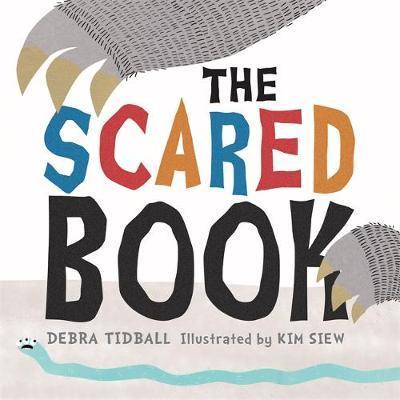
Once there were some monsters. This book is full of them. Big, bright, colourful, funny-looking monsters. Two headed monsters, multi-eyed monsters and even one with a bat hanging off its arm. The book is so scared of the monsters, it’s afraid to tell its story. It needs help from the reader.
There’s a tingle in my spine. Can you scratch it for me? Prickly, three-eyed goosebumps need to be rubbed away. Each time the monsters are banished, something else happens. Now giant stomach butterflies need to be blown away. Monsters need to be trampled with fingers. And their terrible smell needs to be fanned away.
After all the scary monsters are gone, it’s time to sit somewhere comfortable with the book. Tracing this spiral with your finger will help me relax. Finally, the story can be told.
Every house, school library and preschool needs this book.
It’s a wonderful way to introduce children to how much fun reading can be.
 Young readers are cleverly guided through interacting with the story and its monsters. The Scared Book is perfect for reading aloud to large groups of children or to a single child. Every house, school library and preschool needs this book. It’s a wonderful way to introduce children to how much fun reading can be.
Young readers are cleverly guided through interacting with the story and its monsters. The Scared Book is perfect for reading aloud to large groups of children or to a single child. Every house, school library and preschool needs this book. It’s a wonderful way to introduce children to how much fun reading can be.
For ages 3-6. 5 stars.
February 12, 2018
Sandy reviews: Ida, Always
I love reviewing books. I know lots of authors don’t feel the same and some even feel it’s not appropriate. You can find more about what I think here. I read lots of children’s books. I believe staying in the zone it’s an essential part of being a children’s author. Not everyone agrees with that either. I blogged about that here. But what everyone does agree on, is it’s important to support each other. So if I’m going to read, I’m going to review and support.
This series of posts is a retrospective of some of my favourite reviews from 2017.
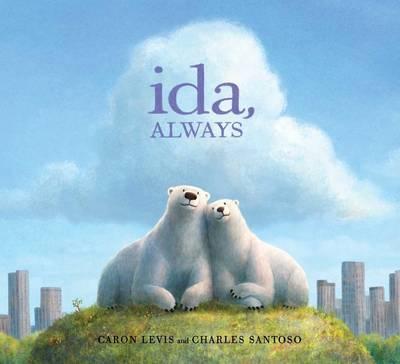
Ida, Always – Caron Levis and Charles Santoso
This is the story of Gus and Ida, who live together in a big city zoo. They play all day and at night, they sleep in their separate caves.
The city noises surround them. Buses rumble, taxis honk, pigeons coo, people call to each other and children laugh. When Gus wishes he could see it all, Ida tells him it’s the city’s heartbeat, that it’s always there.
“You don’t have to see it to feel it,” said Ida. “Listen.”
One morning, Ida doesn’t emerge from her cave. She’s sick and the zookeeper explains Ida will never get better. The two bears spend their last days together and when Ida is gone, Gus remembers her words and listens.
The sidewalks tap and the streets hum. Gus’s heart beats. And Ida is right there. Always.
The soft illustrations convey a gamut of emotion. Gus and Ida laugh and love; they growl in frustration and find acceptance.
Ida, Always is a sad story, with an uplifting and realistic ending. It needs to be read with caution, care and comfort. It is also an important story, one that reflects the end of a much-loved life in a way young readers will understand.
An invaluable resource for children dealing with grief. For ages 4 to 8.
4.5 stars
[This review first appeared in the children’s Funday Supplement of the Sunday Telegraph on 8 January 2017]
January 28, 2018
Six ways technology can help writers

Love it or hate it, technology is a survival skill for writers in a world where the Internet dominates communication and culture. The good news is that writer technology has always got your back. If you carry a smartphone, you’ve can have everything you need with you. Any day. Any time. Brilliant idea in the supermarket aisle? No problem. Stick it on a card in an Ideas list on Trello. Hard drive dies. Not a problem if you’ve got a backup procedure in place.
Use the right tools and technology will save you time.
The key to the puzzle is to use technology wisely. Strike a balance between the benefits and the things you prefer to do ‘old-school’ pen and paper-wise. If a task is repetitive, don’t do it manually. After all, many writer tech solutions were created by people who didn’t want to spend time doing it ‘the long way’. If you use the right tools for the task, technology will save you time. And time saved, is time that can be spent on writing.
Time saved with writer tech, is time that can be spent on writing. or other stuff.

Image credit: Designed by Freepik
If you’re interested in that, you might like to sign up for my free Writer Tech newsletter packed with simple how-to instructions, useful tips and technology ideas specifically for writers. My non-writer professional background is systems analysis, coding and project management. Let me help you navigate the minefield of choices .
Six ways technology can help writers with all sorts of writerly stuff
You’re reading on? Excellent! If you start to get the idea that there’s a lot of overlap – you’re right. And it’s good thing. You don’t need a toolbox full of technology. You need a small set that meets your specific needs and comfort zone. If you’re a spreadsheet user, it’s amazing how many tasks you can do with just that.
Storing stuff
Writers have heaps of stuff to store. Some of it is administrative, like keeping receipts for tax deductible expenses. Some of it is about things you don’t want to forget – like capturing and storing the story or blog ideas that catch you at inopportune moments. Or research that would benefit from being scanned and tagged for easy retrieval. Or the all important backups. And remembering passwords? There’s technology to help with all of that.

Image credit: Designed by Freepik
Planning Stuff
Writers have heaps of stuff to plan. You have stories that need to be plotted and planned. You have time to manage on a daily basis and your calendar is busy. Chances are you’re juggling a second job and family commitments. You’re trying to avoid the soil media time suck. And then there are events – book launches, festival attendances, school visits and speaking engagements. Travel involves planning and if you write for children you might be carting props. Maybe you want to set goals. There’s technology to help with all that.
Managing Social Media Stuff
Social media is a writing distraction danger area. Seeming endless things to do and an enormous time suck, even when it’s fun. Finding the balance between what you want to do and what you need to do is hard. Everyone’s balance is different. Maybe you just don’t want to go there. There’s content to be curated. Information to be shared. And maybe scheduled. Information to extract and store. You want to it as quickly as possible as possible, but effectively enough that you’re not wasting your time, right? It’s up to you how much time you spend but technology will maximise that time. Minimum 15 mins a day? Doable. Want more? Analytics of all kinds. Real connections. Doable. There’s technology to help with all that.

Image credit:Designed by Freepik
Communicating Stuff
Writers are always communicating – through social media, blogging, email, appearances – and with every word they write. They need posters and flyers. Contact pages on their website. Did someone say newsletter? Email can be overwhelming. Presentations and workshops. Book trailers. You tube channels. Podcasts. And whatever you create or communicate, to maximise your time you’ll want to out it through more than one channel. There’s technology to help with that.
Blogging Stuff
Blogging can be simply about writing words (great words, of course) and posting. But what about bells and whistles – scheduling, shareable memes, collage grids of books and plugins. Finding images and manipulating images.And sharing, so that someone reads the blogs. There’s technology to help with all that.
Publishing stuff
You might be involved in self publishing, traditional publishing, e-books, on-line platform publishing or interactive storytelling. What about Scrivener? Every time you put a word somewhere in public, from a print brochure to your blog, you’re publishing stuff. There’s technology to help with all that.
Keep it simple with informed choices.
It all sounds so overwhelming, but you’ll find you only need a small set of tools and access to tips and tech hacks. It doesn’t have to be a big deal. Keep it simple with informed choices.
Why not sign up below and check out Writer Tech?
If you don’t like what you find, you can easily unsubscribe.
January 9, 2018
Incidental Comics & the December 18 Challenge
This is a blog post from my Posts from Posts series where other people’s blog posts and web site content inspire me to write a blog post of my own.
One of the main reasons I love Twitter, is because it’s a gateway for discovering and learning new things. One of my early discoveries was Incidental Comics drawn by Grant Snider (@grantdraws).
My all time favourite @grantdraws comic. I want this chiselled on my headstone! or that box they put your ashes in. Either way I’m taking this with me. Inspiration https://t.co/V7uVBaqLHy pic.twitter.com/VWREYuqnS6
— Sandy Fussell (@sandyfussell) January 8, 2018
I visit the Incidental Comics website every week and pin my favourites to a Pinterest Board called Comics for Creatives (along with the work of others I admire).
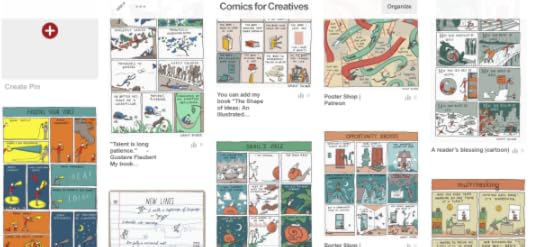
They’re comics that speak to heart and soul of a creative person, especially one who loves to create with words
The website is a place I can always go to for inspiration, motivation and a laugh. They’re comics that speak to heart and soul of a creative person and especially one who loves to create with words. When Grant’s first book came out in 2017, I broke my ‘Australian only’ bookstore rules and ordered eight copies from an online overseas store (not Amazon!). I just couldn’t wait the extra months for the book to reach Australia. I’ve since gifted seven copies to friends for Christmas.
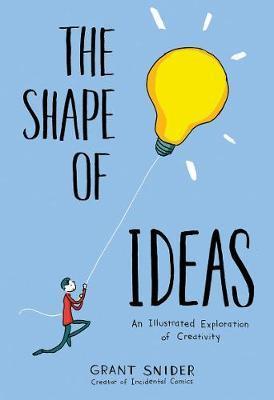
For Christmas, for myself, I received a copy of the calendar.

I saw a challenge in the 18 December 2017 post and decided to accept
When I was catching up on post Christmas blog and website reading, I saw a challenge in Grants’s 18 December 2017 post and decided to accept. Here is what it looked like:
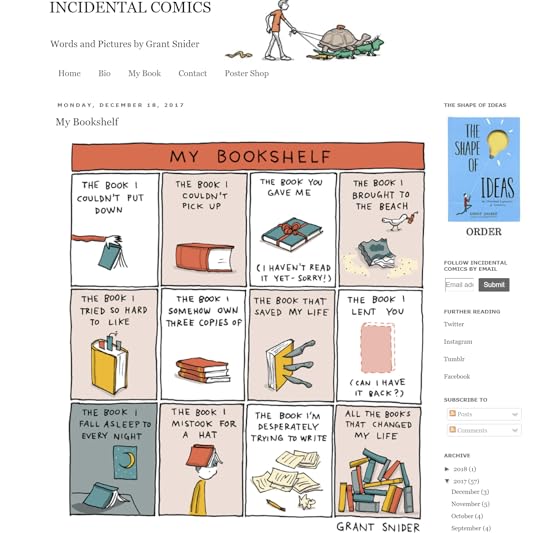
And here is my response:

The nitty gritty in the detail…
The book I couldn’t put down – Nevernight by Jay Kristoff. Completely unexpected. The best way to find great reads and new favourite authors.
The book I couldn’t pick up – Fifty Shades of Grey by E. L. James. No-one I knew had a positive word to say about it. The biggest anti-recommendation ever.
The book you gave me – They Cannot Take the Sky (Stories from Detention) – a Christmas gift. Powerful stuff that chronicles one of the few things that make me embarrassed to be Australian.
The book I brought to the beach – Zen and the Art of Motorcycle Maintenance by Robert M Pirsig. Memories. Peregian beach. A yellow van. Cinnamon in the coffee. A small tent. Lots of books. The man I married.
The book I tried so hard to like – The Painted Caves by Jean M Auel. I loved the Earth Children series and was so excited when Book 6 came out after a ten year gap. I never got past the third chapter. I kept, and still love the others, but this one didn’t even make my bookshelf.
The book I own three copies of – The Graveyard Book by Neil Gaiman. Best. First. Page. Ever. I have the children’s edition, the adult edition and the graphic novel. Although I’m not convinced the child and adult editions needed a different cover. Unless adults are afraid to be seen reading children’s books? “There was a hand in the darkness, and it held a knife. The knife had a handle of polished black bone, and a blade finer and sharper than any razor. If it sliced you, you might not ever know you had been cut, not immediately. The knife had done almost everything it was brought to that house to do, and both the blade and the handle were wet.”
The book that saved my life – Cloud Hidden – Whereabouts Unknown by Alan Watts. Not so much saved as changed. It opened my eyes to a whole cosmos of eastern philosophy. And it seeped into my own writing. “The way of the warrior is a long walk. So many paths to travel – Buddha, Tao, Zen. We walk in never-ending circles. Round and round. Until our brains spin like goldfish swimming in a bowl.” – Samurai Kids: White Crane.
The book I lent you – Catch-22 by Joseph Heller. My treasured Year 12 annotated copy lent to a good friend who when I asked for it back a month later, insisted she never had it. Four decades later, it’s not the only book that’s never come back, but it’s the only book I regret lending.
The book I fall asleep to every night – The Tale of Despereaux by Kate Di Camillo. Truth is, I don’t read in bed at night. But this is my comfort book. The one that reinforces the value of stories for me. “Stories are light. Light is precious in a world so dark. Begin at the beginning. Tell Gregory a story. Make some light.”
The book I mistook for a hat – Time and Being by Martin Heidegger. I tackled this one on and off for years, much like wearing an old favoured hat. “The being of Being is not a being.” I loved and hated that sentence. It meant everything and nothing. It made me feel smart and stupid at the same time. It still does.
The book I’m desperately trying to write – Algernon and the Outside Girl. Actually I think it’s better than anything I’ve written for a long time so I’m not so much desperate as driven.
All the books that changed my life – Seriously? In one picture. Can’t be done. A snapshot of a section of one bookcase is the best I can do.
January 7, 2018
The Migratory Path of Pencils

I have a huge collection of novelty erasers, pencil sharpeners, rulers and pencils. Enough to rival a whole class of kindergarten kids.
I’m an obsessive collector and connoisseur of stationery. An expert in the field, if I don’t say so myself. I have a huge collection of novelty erasers, pencil sharpeners, rulers and pencils. Enough to rival a whole class of kindergarten kids. Everything from Disney princesses and Pokemon to Ninja Turtles and Zen proverbs. And it’s not for looking at or sitting on a shelf. I use it all.
I particularity love my Lego pencil case because I can build on top of it. While I’m writing I can arrange Lego battle scenes. Ninjaga Lego made excellent samurai warriors when I was writing the Samurai Kids series. There’s even one that looks just like Sensei.
There is nothing stationary about stationery.
I’ve had a long time to study the habits of stationery in one its common natural environments, the writer’s desk. My first observation is that stationery is poorly named. There is nothing stationary about stationery. It moves constantly. It has extremely erratic migratory habits, and no sense of direction. Once a piece of stationery is off on its travels, it’s very hard to track and rarely comes back. My preferred 2B lead pencils seem to be a particularly troublesome species. They are always getting lost.
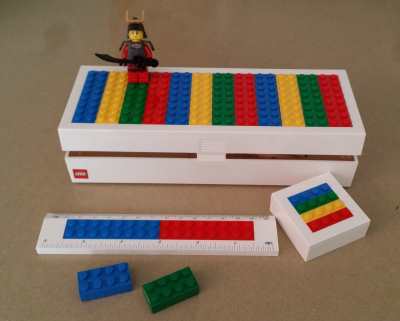
Recently in my office, scissors were elevated to the status of endangered species. Four pairs just disappeared, rapidly heading towards extinction. It was time for a more detailed study of the migratory paths of the various bits of stationery endemic to my desk region.
I soon discovered, much to my relief, that scissors were not becoming extinct. This species had chosen to colonise new territory and live elsewhere. In the kitchen, the laundry, the lounge room and the car.
Sticky tape seems to prefer the bedrooms of younger people. How that symbiotic relationship works, I have no idea.
Pens and pencils are the worst offenders. Sometimes they hide out before they go so you’re never sure if they’re still there. You can waste a lot of time playing hide-and-seek with pencils.
Stationery has no loyalty. It’ll go anywhere with anybody.
Stationery has no loyalty. It’ll go anywhere with anybody. You can love it and buy it special purple sparkly pencil cases, but it’ll still hitch a ride in a stranger’s pocket the very first chance it gets.
Which brings me to the rare and wayward purple pen with a butterfly on top. Not seen since 1985 when it last signed a copy of Jaguar Warrior in a library. I’m always hoping a sighting will eventually be reported.
Yes, it’s been a busy day, my brain is frazzled and I can’t find my favourite pencil!
December 31, 2017
My Year in Review

So how did the goals go?
With a little goal post shifting, not too bad. Although I only nailed three, I managed to take small steps on most of my goals. I was reminded of the theory I knew but ignored. Goals need to be measurable. For 2018 I’m changing the way I set my goals, but that’s a post for tomorrow.
How did the reading and reviewing go?
Great. I read lots of books although I didn’t count them. I reviewed 103 Australian children’s books and one non-Australian in the Sunday Telegraph. I’m happy with that flag-waving. Australian kidlit is worth shouting about.
My favourite adult book of 2017 was The Choke by Sofie Laguna. I blogged about that as part of the 2017 Book Discovery series on Sophie Masson’s Feathers of the Firebird writing blog.
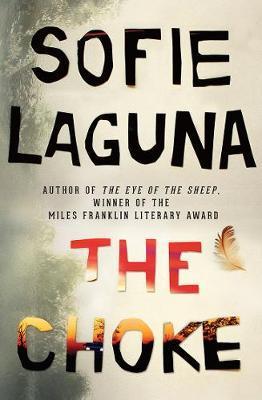
My favourite YA Book was Words in Deep Blue by Cath Crowley. Words fail me. I dont think I could review this one if I tried.
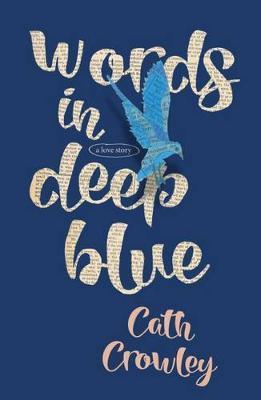
I had two favourite middle-grade books. As a MG author I feel entitled to two! One was Lisa Nichol’s Dr Boogaloo and the Girl Who Lost Her Laughter.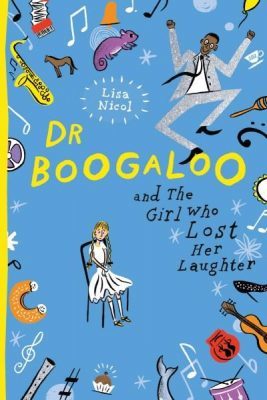
The other was Mr Bambuckles Remarkables by Tim Harris.
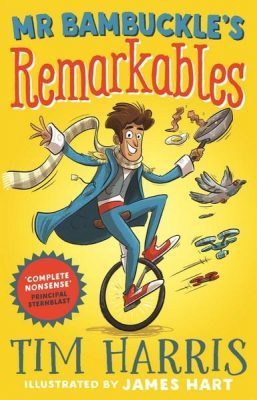
I’m a picture book author too, and picture books are special so I can have three 2017 favourites for those. I Want to Be in a Book by Narelle Oliver. It was inspirational (and sad) to visit the Narelle Oliver Art Exhibition when it was in Ipswich.
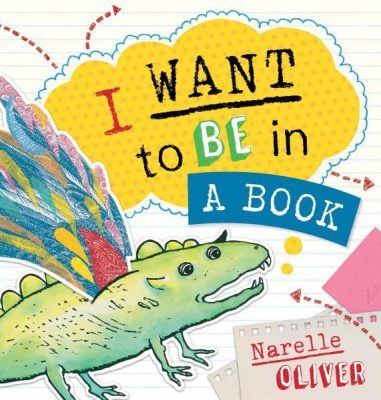
The Scared Book by Debra Tidball. This book is such interactive, reading fun.

I Just Ate My Friend by Heidi McKinnon. So clever and I loved the illustrations.
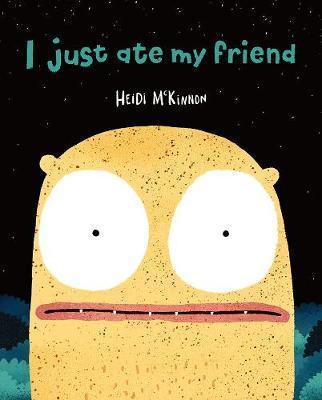
There were so many more books I loved and in 2018 I hope to reblog some Funday reviews for my favourites
Highlights Out and About
There were lots of those. A return visit to the Ipswich District Teacher Librarian Network Story Arts Festival (the first festival I ever attended), a packed Author platform session at Writers Unleashed. numerous successful Minecraft workshops and fun school visits. Libraries, especially school libraries, are my favourite places and I spent lots of time in them.
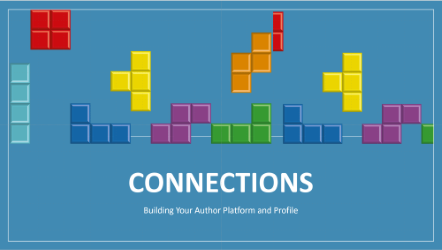

Writing
I finished Blue Boy, Red Day but there’s a lot more work to be done, but I’ve got some excellent editorial notes to work on. First, I’m finishing my current WIP, Algernon and the Outside Girl, as there’s currently serious momentum there. And the big news is I was finally happy enough to submit a picture book ms I’ve been reworking for some time. Ben Bagley has found the perfect home, but will be getting a new name.
Family Stuff
My eldest son and his partner Overwatched their way across France, Germany, the Netherlands, the US and Taiwan. My youngest, in the last few months of the year, experienced the first real improvement in seven years of chronic illness. The Love of My life settled into retirement and a role at Orange Sky Laundry.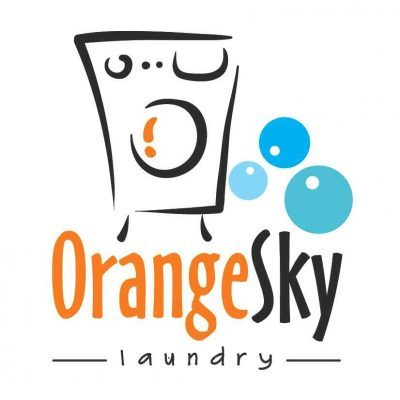
Ever Onward
Looking forward for me, there’s family to fuss over, more writing and reading to do, the job I love at the South Coast Writer’s Centre, distance education tutoring for Year 11, and just maybe, art classes.
November 26, 2017
Smiling – the cheapest medicine on earth
People often say to me: “You’re always smiling.” I love this compliment, even if they say it with a perplexed look.
Maybe that’s because it might seem like I don’t have much to smile about. There are serious health problems in my family and someone I care about a lot is suffering pain from a very nasty cancer. But when it seems there’s nothing you can do, a smile can be very powerful stuff. Science says so and I know so.
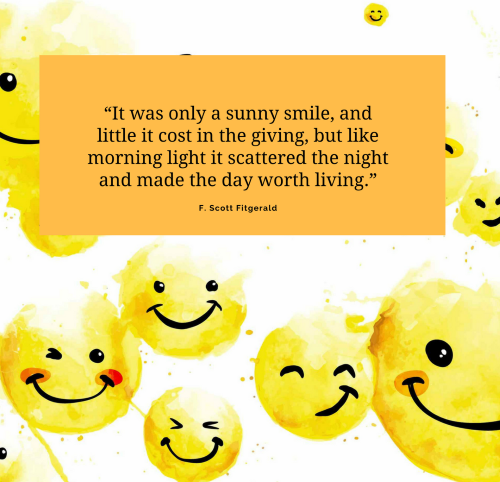
Background image credit: Designed by Freepik
Smiling began as a conscious decision. When I was a kid, I noticed old ladies (probably younger than I am now!) often had hard, grim faces. I was determined never to become like that. If my Nana caught me looking grumpy, she would say “If the wind changes, you’ll stay like that.” So I decided the only solution was to smile like crazy as often as I could. And I’ve been doing it ever since.
It became a habit of the very best kind. It made me feel good. And I know it made other people feel good because their faces would light up as they smiled back. Then I would feel good all over again. A guaranteed 200% return on your investment! Double bonus because smiling and laughter like to hang around together.
As I got older, I discovered this phenomenon had a scientific basis. It was a feedback loop. It was social, creating feelings of co-operation friendliness , helpfulness and trust. And it was biological. Smiling has hormonal and physiological consequences which make us feel better and want to smile more. Smiling self medicates and heals. (Psychology Today) Who wouldn’t want to reap those benefits?
Decades ago, on a day tour in New Orleans, the tour guide said: “Don’t look anyone in the eye. Don’t smile at anyone.” I found that extremely hard and it didn’t help at all. I still managed to get separated and conned by a group of teenagers. I paid $20 for the trick I didn’t asked to see because it seemed the smartest option. I smiled, they smiled. We laughed. We talked and they recommended some places to see in New Orleans. So I’m still convinced smiling is the best option.
A quick google will turn up pages of posts about the benefits of smiling, but I’m not going to go there. If you want to hear about the research, try this TED talk on The Power of Smiling.
I think smiling research is best done by having a go. Smile every day, at everyone and see what happens.
November 19, 2017
You won’t remember me…
Whenever my writing life encounters a road block or a pothole, I draw my support and motivation from a stockpile of emails from readers. One of the rewards of being a kid’s author – and it’s a biggie – is the emails they write. Funny, quirky and always honest. When they like what they read, they know how to say it so an author feels on top of the world.
.eic-frame-4480 { width: 303px; height:216px; background-color: #444444; border: 1px solid #444444; }.eic-frame-4480 .eic-image { border: 1px solid #444444; }.eic-frame-4480 .eic-image-0 {background-image: url("http://www.sandyfussell.com/sf/wp-con... 156px 240px;background-position: 0px 0px;}.eic-frame-4480 .eic-image-1 {background-image: url("http://www.sandyfussell.com/sf/wp-con... 156px 235px;background-position: 0px 0px;}
One of my memorable emails came from eight-year-old Andrew in Canada. He was loving the Samurai Kids series, but he was worried. He’d found a spelling mistake, and didn’t want to tell me, but thought he should. Because it was on every page!
I was puzzled. I’m a champion speller (Camden South Primary School), I had Microsoft to help me and an Absolutely Wonderful Editor (Sue Whiting). I read on. Andrew’s mum was Japanese. He wrote and spoke fluent Japanese. Oh, oh! Andrew had impressive credentials. He told me I had spelled the Japanese word for mouse incorrectly. Now I was even more puzzled. I didn’t know what the Japanese word for mouse was. I kept reading. It was Nezume.
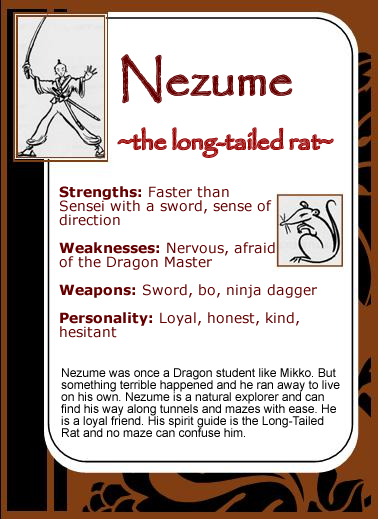
Suddenly it all made sense. I made up the names of the Samurai Kids – except for Yoshi which came off the Nintendo box. In retrospect this was mistake, regardless of the spelling issue. It was my first book and I received lots of adult advice while I was writing, that kids would never remember six Japanese names. I later discovered they can easily remember twenty-six. Apparently only adults struggle with six.
But by unhappy accident, I had pulled the word Nezume’s name out of thin air and even worse, I had given him the spirit of the Long-tailed Rat. So to Andrew, clearly a spelling mistake with the word mouse. Andrew and I exchanged about three emails. Over the years, I continued to tell the story of his first email, especially at school visits when kids asked me what would be the one thing I would change in Samurai Kids, if I could start again.

Fast forward eight years, to 2017, one month ago. An email arrives. “It’s Andrew from Canada. You won’t remember me…” Andrew is now sixteen and making some big decisions about his future career. He’s interested in IT and remembered the email conversations we had, including a discussion about my job as a software developer. He was looking for information and advice.
I wrote back to answer his questions and tell him not only had I never forgotten him, I was still talking in schools about his first email. He thought that was really funny and said he felt a bit famous.
Children’s authors often touch the lives of kids, but mostly we don’t hear about it. I always respond to every email and letter in detail, no matter how many or how often or how much the same they are. I’m lucky to have lots of stories that vindicate how important this is. Andrew’s story is my new favourite.
(Andrew’s name and country changed)



